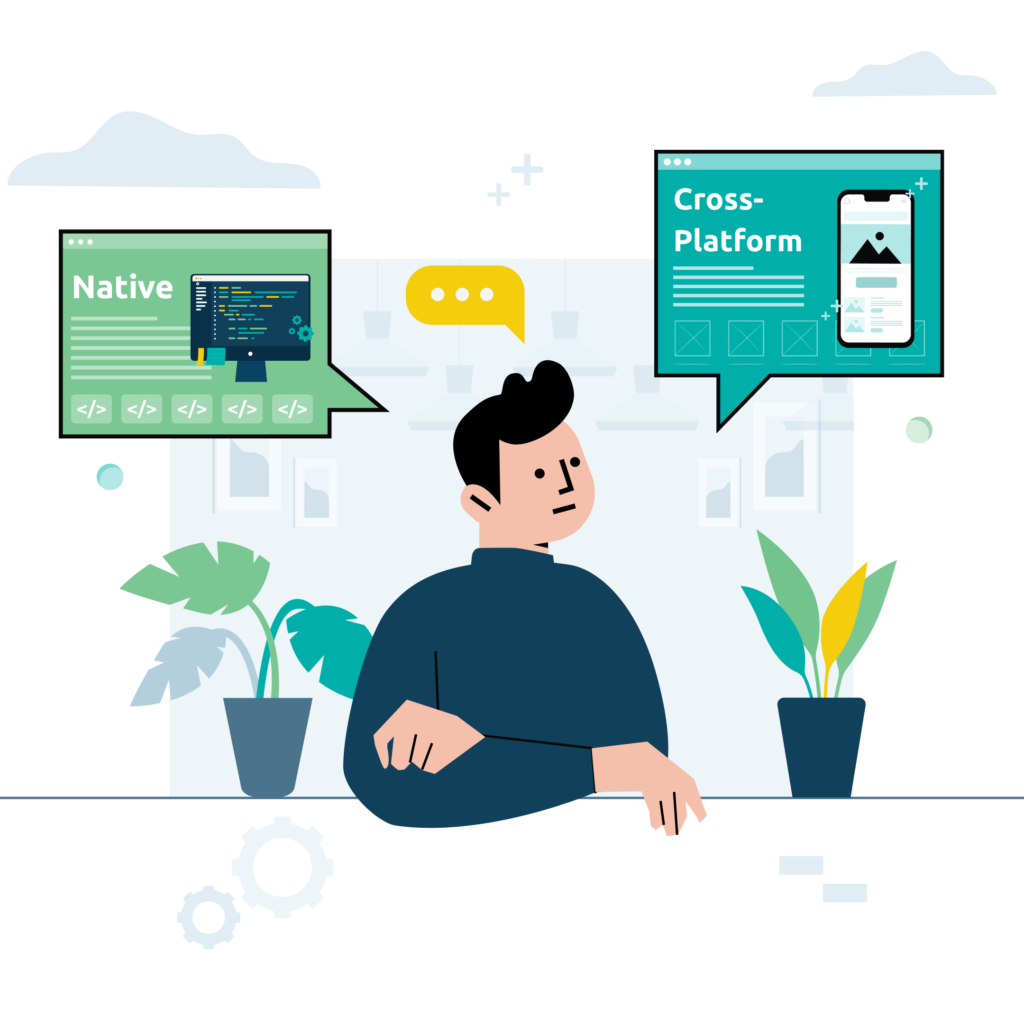Introduction to Agile Development and Team Extension
Agile development has emerged as a preferred methodology for its flexibility and responsiveness to change. However, as teams grow and projects become more complex, organisations often look to augment their capabilities through team extension. This article explores how team extension aligns with agile development principles, enhancing agility and efficiency in modern development practices.
Understanding Agile Development Principles
Definition and Core Values
Agile development is a project management approach that values iterative progress, collaboration, and adaptability. At its core, Agile focuses on delivering incremental improvements through short, iterative cycles known as sprints. This methodology contrasts with traditional, linear project management approaches by emphasising flexibility and ongoing feedback.
The core values of Agile are:
- Individuals and Interactions Over Processes and Tools: Agile prioritises the collaboration and communication between team members above rigid processes and tools.
- Working Software Over Comprehensive Documentation: The primary goal is to deliver functional software that meets user needs rather than focusing heavily on extensive documentation.
- Customer Collaboration Over Contract Negotiation: Agile encourages continuous feedback and collaboration with customers to ensure the product evolves in alignment with their needs.
- Responding to Change Over Following a Plan: Agile teams embrace change and adapt their plans as needed, rather than sticking strictly to a predetermined path.
These principles underscore Agile’s commitment to flexibility, responsiveness, and delivering value through regular, iterative updates.
Key Agile Methodologies (Scrum, Kanban, etc.)
Agile encompasses several methodologies, each with its approach to implementing Agile principles:
- Scrum: Scrum is one of the most popular Agile methodologies. It involves dividing projects into time-boxed iterations called sprints, usually lasting two to four weeks. Scrum teams hold regular meetings, including sprint planning, daily stand-ups, and sprint reviews, to ensure continuous progress and adaptation.
- Kanban: Kanban focuses on visualising work processes to optimise flow and manage work in progress. It uses boards to represent tasks and their status, allowing teams to identify bottlenecks and improve efficiency. Unlike Scrum, Kanban does not prescribe fixed iterations but instead aims for continuous delivery and improvement.
- Extreme Programming (XP): XP emphasises technical excellence and frequent releases of small, functional segments of the project. It incorporates practices such as pair programming, test-driven development, and continuous integration to enhance software quality and adaptability.
Each of these methodologies offers unique practices and tools, but all share a commitment to Agile’s core values of flexibility, collaboration, and iterative progress.
What is Team Extension?
Definition and Scope
Team extension refers to the practice of augmenting an existing development team with external professionals who integrate seamlessly into the existing workflow. This model allows organisations to scale their capabilities quickly, access specialised skills, and adapt to project demands without the long-term commitment associated with hiring full-time employees.
The scope of team extension includes:
- Skill Augmentation: Adding experts with specific skills or knowledge that complement the existing team’s capabilities.
- Capacity Expansion: Increasing team size to handle larger workloads or tighter deadlines.
- Flexibility: Providing a flexible workforce that can be scaled up or down based on project requirements.
Team extension provides a strategic way to enhance development efforts while maintaining the core values and principles of the internal team.
How Team Extension Integrates with Agile Development
Team extension aligns well with Agile methodologies by complementing the iterative and collaborative nature of Agile projects. Here’s how:
- Seamless Integration: Extended team members are integrated into the existing team’s Agile practices, participating in daily stand-ups, sprint planning, and reviews. This integration ensures that all team members, whether internal or external, work towards common goals and maintain alignment.
- Increased Flexibility: With team extension, Agile teams can quickly adapt to changing project requirements. The ability to scale the team up or down in response to evolving needs supports Agile’s emphasis on responding to change.
- Enhanced Expertise: By bringing in specialised skills through team extension, Agile teams can tackle complex challenges more effectively. This expertise enhances the team’s ability to deliver high-quality software and achieve project goals.
- Improved Collaboration: Team extension fosters collaboration by adding diverse perspectives and skills to the team. This diversity enriches problem-solving and innovation, aligning with Agile’s focus on individuals and interactions.
In summary, team extension complements Agile development by providing additional resources and expertise while maintaining Agile’s core values of flexibility, collaboration, and iterative progress.
The Synergy Between Agile Practices and Team Extension
The integration of team extension with Agile development practices can significantly enhance the efficiency and effectiveness of development projects. This synergy allows organisations to harness the full potential of their agile methodologies while expanding their team’s capabilities. Let’s explore how team extension complements Agile practices, focusing on sprint planning, execution, and daily stand-ups.
Enhancing Sprint Planning and Execution
Streamlining Sprint Planning with Extended Teams
Sprint planning is a critical phase in Agile development, where teams define the scope of work for the upcoming sprint and establish priorities. When extending a team, integrating new members into this process can be challenging but highly beneficial.
- Inclusion of Extended Team Members: For effective sprint planning, it’s essential to include extended team members in the planning sessions. Their inclusion ensures that all team members, regardless of their location, have a clear understanding of the sprint goals, priorities, and tasks. This inclusion also helps in identifying potential challenges and dependencies early, facilitating smoother execution.
- Adjusting Planning Practices: With extended teams, it’s important to adapt planning practices to accommodate different time zones and working styles. This might involve scheduling planning meetings at times that are convenient for all team members or using asynchronous methods to gather input and feedback. Tools like shared digital boards and collaborative documents can help in capturing and communicating planning details effectively.
- Clarifying Roles and Responsibilities: Clear communication about roles and responsibilities during sprint planning helps avoid confusion and overlaps. Ensure that extended team members are fully briefed on their tasks and how their work integrates with the overall sprint goals. This clarity promotes accountability and alignment within the team.
Aligning Goals and Deliverables Across Distributed Teams
Aligning goals and deliverables across distributed teams requires careful coordination and communication. Here’s how team extension can be effectively managed:
- Setting Clear Objectives: Establishing clear, measurable objectives for each sprint is crucial for alignment. Ensure that these objectives are communicated effectively to both internal and extended team members. Use tools like goal-tracking software to keep everyone focused on the agreed-upon deliverables.
- Regular Check-ins and Updates: Schedule regular check-ins to monitor progress and address any issues that may arise. These check-ins can be done through video conferences or collaborative platforms, allowing for real-time updates and feedback. This practice helps in keeping the team aligned and responsive to any changes or challenges.
- Creating a Unified Vision: Foster a sense of unity by creating a shared vision and understanding of the project goals. This can be achieved through team-building activities, shared documentation, and regular communication. A unified vision helps in maintaining focus and coherence among distributed team members.
Optimising Daily Stand-Ups and Collaboration
Facilitating Effective Daily Stand-Ups Across Time Zones
Daily stand-ups are a cornerstone of Agile practices, providing a platform for team members to share updates, discuss challenges, and align on daily tasks. For distributed teams, facilitating effective stand-ups across time zones involves several key practices:
- Scheduling Flexibly: Given the diverse time zones of extended team members, scheduling stand-ups at a time that accommodates most team members is crucial. Consider rotating the meeting times to ensure that the inconvenience of early or late hours is evenly distributed among the team.
- Utilising Asynchronous Updates: If real-time stand-ups are not feasible, consider using asynchronous updates. Team members can post their updates and questions on a shared platform, allowing everyone to review and respond at their convenience. This approach maintains communication flow without requiring all team members to be online simultaneously.
- Maintaining Consistency: Ensure that stand-up meetings maintain their regularity and structure, regardless of the distribution of team members. Consistency in the format and frequency of stand-ups helps in building a routine and ensures that everyone stays informed and engaged.
Tools and Techniques for Maintaining Communication and Engagement
Effective communication and engagement are vital for the success of distributed teams. Here are some tools and techniques to enhance collaboration:
- Collaborative Platforms: Use collaborative platforms like Slack, Microsoft Teams, or Asana to facilitate communication and project management. These tools offer features like channels for different topics, direct messaging, and file sharing, which help in maintaining seamless communication among team members.
- Video Conferencing Solutions: Regular video meetings are essential for fostering personal connections and effective communication. Tools like Zoom, Google Meet, or Microsoft Teams provide video conferencing capabilities that allow for face-to-face interactions, even when team members are geographically dispersed.
- Real-Time Collaboration Tools: Leverage real-time collaboration tools such as Miro for brainstorming and visual collaboration or Confluence for documentation and knowledge sharing. These tools help in creating a shared workspace where team members can contribute and collaborate in real time, enhancing overall productivity and engagement.
- Feedback and Recognition: Implement mechanisms for regular feedback and recognition to keep the team motivated and engaged. Recognising achievements and providing constructive feedback fosters a positive team culture and encourages continuous improvement.
Synergy between Agile practices and team extension can lead to enhanced agility, efficiency, and collaboration. By streamlining sprint planning, aligning goals, and optimising daily stand-ups, organisations can leverage the strengths of extended teams while maintaining the core principles of Agile development. Effective communication tools and techniques further support this integration, ensuring that distributed teams work cohesively towards shared objectives.
Tools and Technologies for Agile Team Extension
In the modern landscape of agile development, effective team extension relies heavily on the right set of tools and technologies. These tools facilitate collaboration, streamline project management, and ensure seamless integration among distributed team members. This article delves into the essential tools and advanced technologies that enhance the efficiency and effectiveness of agile teams operating in a distributed environment.
Essential Collaboration Tools for Distributed Teams
Distributed teams, often spread across various geographic locations, require robust tools to ensure seamless collaboration and communication. The right tools can bridge the gap between team members, enabling them to work together as if they were in the same office. Here are some essential tools for distributed teams:
Project Management Software (e.g., Jira, Trello)
- Jira: Jira, developed by Atlassian, is a powerful project management tool widely used in Agile environments. It excels in tracking tasks, managing backlogs, and facilitating sprint planning. Key features include:
- Customisable Workflows: Jira allows teams to create workflows that match their specific processes, ensuring that each project phase is tracked and managed effectively.
- Sprint Planning and Tracking: Teams can organise work into sprints, track progress, and visualise the workflow using boards and burndown charts.
- Integration with Other Tools: Jira integrates seamlessly with other tools such as Confluence for documentation and Bitbucket for code management, providing a comprehensive project management solution.
- Trello: Trello, another popular tool, offers a more visual approach to project management. It uses boards, lists, and cards to organise tasks and workflows. Key features include:
- Drag-and-Drop Interface: The intuitive interface allows users to move tasks through different stages easily, providing a clear view of project progress.
- Customisable Boards: Teams can create boards for various projects, customise lists to represent different stages, and add cards for individual tasks.
- Power-Ups and Integrations: Trello supports Power-Ups that enhance functionality, such as calendar views, time tracking, and integration with tools like Slack and Google Drive.
Communication Platforms (e.g., Slack, Microsoft Teams)
- Slack: Slack is a widely-used communication platform designed to enhance team collaboration. It offers:
- Channels and Direct Messaging: Teams can create channels for specific topics, projects, or teams, and use direct messaging for private conversations.
- File Sharing and Integration: Users can share files directly within conversations and integrate with other tools like Google Drive, Dropbox, and Jira.
- Search and Archiving: Slack’s search functionality allows users to find past messages and files quickly, ensuring that important information is easily accessible.
- Microsoft Teams: Microsoft Teams, part of the Office 365 suite, provides a comprehensive collaboration environment. Its features include:
- Integrated Office Apps: Teams integrates with Office apps like Word, Excel, and PowerPoint, enabling real-time collaboration on documents.
- Meeting and Video Conferencing: Teams supports video conferencing, scheduling meetings, and sharing screens, facilitating face-to-face interactions even when working remotely.
- Task Management and Integration: Teams includes task management features and integrates with other Microsoft tools, providing a unified workspace for communication and project management.
Advanced Technologies for Seamless Integration
Beyond essential collaboration tools, advanced technologies play a crucial role in ensuring seamless integration and effective collaboration among distributed team members. These technologies enhance real-time interaction and visual collaboration, further bridging the gap between remote and in-house team members.
Video Conferencing Solutions
- Zoom: Zoom is a leading video conferencing solution known for its reliability and ease of use. Key features include:
- High-Quality Video and Audio: Zoom provides clear video and audio quality, crucial for productive meetings and discussions.
- Breakout Rooms: The ability to create breakout rooms allows for smaller group discussions during larger meetings, enhancing collaborative efforts.
- Screen Sharing and Recording: Users can share their screens and record meetings, facilitating effective communication and documentation.
- Google Meet: Google Meet, part of Google Workspace, offers a simple and secure video conferencing solution. Features include:
- Integration with Google Calendar: Google Meet integrates with Google Calendar, allowing users to schedule and join meetings seamlessly.
- Real-Time Collaboration: Integration with Google Docs, Sheets, and Slides enables real-time collaboration during meetings.
- Security Features: Google Meet provides robust security measures, including encryption and two-factor authentication, ensuring secure communications.
Real-Time Collaboration Tools (e.g., Miro, Confluence)
- Miro: Miro is a visual collaboration tool that facilitates brainstorming and planning sessions. Its features include:
- Interactive Whiteboards: Miro’s digital whiteboards allow teams to brainstorm ideas, create diagrams, and organise information visually.
- Templates and Integrations: Miro offers a range of templates for various planning and brainstorming needs and integrates with tools like Slack and Jira.
- Real-Time Collaboration: Team members can collaborate in real time, making it easy to work together on visual projects and documents.
- Confluence: Confluence, also developed by Atlassian, is a collaboration tool for creating and sharing documentation. Key features include:
- Wiki-Style Documentation: Confluence allows teams to create and maintain a central repository of project documentation, guidelines, and knowledge bases.
- Integration with Jira: Integration with Jira helps in linking documentation with project tasks and issues, providing a comprehensive view of project progress.
- Templates and Collaboration: Confluence offers templates for creating various types of content and supports collaborative editing, enabling teams to work together on documents effectively.
The right combination of tools and technologies can significantly enhance the effectiveness of agile team extension. By leveraging essential collaboration tools like project management software and communication platforms, along with advanced technologies for video conferencing and real-time collaboration, distributed teams can work together seamlessly and efficiently. These tools not only support daily operations but also foster a collaborative and productive environment, crucial for the success of agile projects.
Best Practices for Implementing Team Extension in Agile Environments
Implementing team extension in Agile environments offers numerous benefits, including access to specialised skills and increased flexibility. However, to maximise these benefits, organisations must adhere to best practices that ensure effective integration, communication, and continuous improvement. This article outlines key practices for successfully integrating extended teams and evaluating their performance within Agile frameworks.
Ensuring Effective Integration and Communication
Integrating extended team members into Agile environments requires careful planning and execution. Effective integration ensures that all team members, regardless of their location, work cohesively towards common goals. Here are some best practices for achieving this:
Strategies for Smooth Onboarding of Extended Team Members
- Comprehensive Onboarding Process: Develop a structured onboarding process that familiarises new team members with the project, team dynamics, and Agile practices. This process should include:
- Orientation Sessions: Conduct orientation sessions to introduce new members to the project’s goals, key stakeholders, and organisational culture. This helps in building rapport and understanding expectations from the outset.
- Training on Agile Methodologies: Provide training on Agile methodologies and tools used within the project. Ensure that extended team members are comfortable with Agile practices such as sprint planning, daily stand-ups, and retrospectives.
- Clear Documentation and Resources: Ensure that all relevant documentation, such as project requirements, team guidelines, and Agile processes, is easily accessible to new team members. This includes:
- Project Wiki: Create a project wiki or knowledge base where extended team members can access important information, documents, and updates.
- Role and Responsibility Definitions: Clearly define roles and responsibilities to avoid confusion and ensure that extended team members understand their contributions to the project.
- Initial Integration Meetings: Schedule initial integration meetings with both the extended team and the core team. These meetings should focus on:
- Introductions and Expectations: Introduce team members and discuss expectations for collaboration and communication.
- Alignment on Goals: Align on project goals, deliverables, and timelines to ensure that everyone is on the same page.
Best Practices for Maintaining Agile Ceremonies
- Inclusive Sprint Planning: Involve extended team members in sprint planning sessions to ensure their input is considered when defining the scope and prioritising tasks. Use virtual collaboration tools to facilitate participation and contribution from all team members.
- Effective Daily Stand-Ups: Conduct daily stand-ups at a time that accommodates all team members or use asynchronous updates if necessary. Ensure that stand-up meetings are brief and focused, allowing everyone to share their progress and challenges.
- Engaging Retrospectives: Host retrospectives to review sprint outcomes and identify areas for improvement. Include extended team members in these sessions to gather diverse perspectives and insights.
- Consistent Communication Channels: Maintain consistent communication channels, such as Slack or Microsoft Teams, to keep the team informed and engaged. Use these channels for regular updates, announcements, and informal discussions.
Measuring Success and Continuous Improvement
To ensure that team extension is delivering value, organisations must measure success and focus on continuous improvement. Here’s how to effectively evaluate and enhance team performance:
Key Metrics for Evaluating Team Extension Performance
- Delivery Metrics: Measure the effectiveness of extended teams by tracking delivery metrics such as:
- Sprint Velocity: Monitor the amount of work completed in each sprint to assess productivity and predict future performance.
- Lead Time and Cycle Time: Track the time taken to complete tasks from start to finish, and analyse any delays or bottlenecks.
- Quality Metrics: Evaluate the quality of work produced by extended teams by measuring:
- Defect Rates: Track the number of defects or issues reported and resolved during the sprint. A lower defect rate indicates higher quality work.
- Customer Satisfaction: Gather feedback from stakeholders and end-users to assess their satisfaction with the delivered product.
- Team Engagement Metrics: Assess the engagement and satisfaction of extended team members by measuring:
- Participation Rates: Monitor attendance and participation in Agile ceremonies and meetings.
- Feedback and Surveys: Conduct regular surveys and feedback sessions to gauge team morale and identify areas for improvement.
Feedback Mechanisms and Iterative Improvements
- Regular Feedback Sessions: Implement regular feedback sessions to gather input from both core and extended team members. These sessions should focus on:
- Performance Reviews: Discuss individual and team performance, recognising achievements and addressing any issues or concerns.
- Process Improvements: Identify areas for process improvements and discuss potential solutions to enhance efficiency and collaboration.
- Iterative Improvements: Use feedback and performance metrics to drive continuous improvement. This involves:
- Actionable Changes: Implement changes based on feedback and performance data, and monitor their impact on team effectiveness.
- Regular Review Cycles: Schedule regular review cycles to assess the effectiveness of implemented changes and adjust strategies as needed.
- Encouraging a Culture of Improvement: Foster a culture of continuous improvement by encouraging team members to share ideas, experiment with new practices, and learn from their experiences.
Implementing team extension in Agile environments requires careful attention to integration, communication, and continuous improvement. By following best practices for onboarding, maintaining Agile ceremonies, and measuring performance, organisations can effectively leverage extended teams to enhance their Agile processes. Regular feedback and iterative improvements ensure that the extended team remains aligned with project goals and contributes effectively to overall success.
Conclusion: The Role of Team Extension in Agile Development: Agility and Efficiency
The integration of team extension within Agile development frameworks significantly enhances both agility and efficiency. By expanding the team with skilled professionals from diverse locations, organisations can leverage a broader range of expertise and adapt more swiftly to changing project demands.
Agility is a fundamental principle of Agile development, emphasising flexibility, rapid response to change, and iterative progress. Team extension aligns perfectly with these principles, enabling organisations to scale their teams dynamically, address skill gaps, and manage fluctuating workloads without compromising project timelines or quality. This flexibility is crucial in today’s fast-paced business environment, where the ability to pivot quickly and efficiently can determine a project’s success.
Efficiency is another critical factor, and team extension contributes by optimising resource utilisation and enhancing productivity. With extended teams, organisations can distribute tasks more effectively, streamline workflows, and reduce bottlenecks. The use of modern tools and technologies further supports this efficiency, ensuring seamless communication, collaboration, and project management across geographically dispersed teams.
However, to fully realise these benefits, it is essential to adhere to best practices in integrating and managing extended teams. Ensuring smooth onboarding, maintaining Agile ceremonies, and leveraging the right tools and technologies are vital for achieving successful outcomes. Additionally, continuous measurement of performance and iterative improvements play a crucial role in refining processes and enhancing overall effectiveness.
In summary, team extension in Agile development not only supports greater agility and efficiency but also fosters a more resilient and adaptable project environment. By embracing these practices and focusing on continuous improvement, organisations can harness the full potential of their extended teams, driving successful project outcomes and achieving long-term strategic goals.












